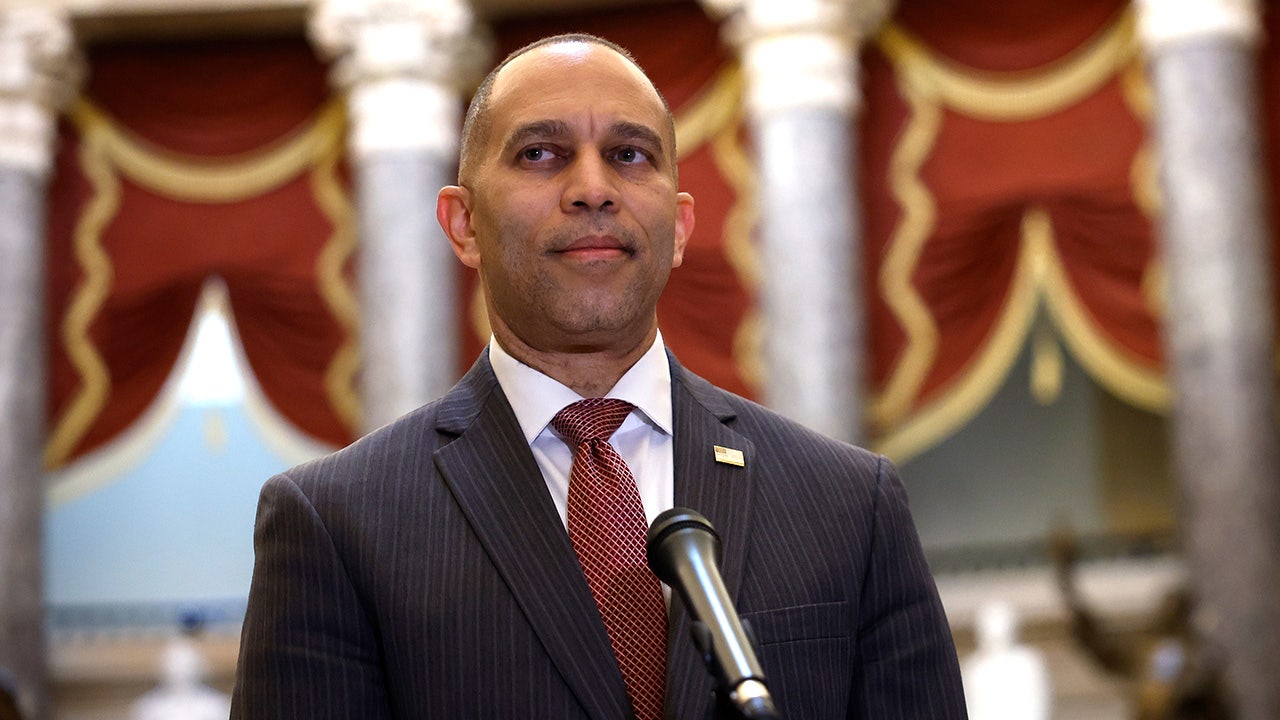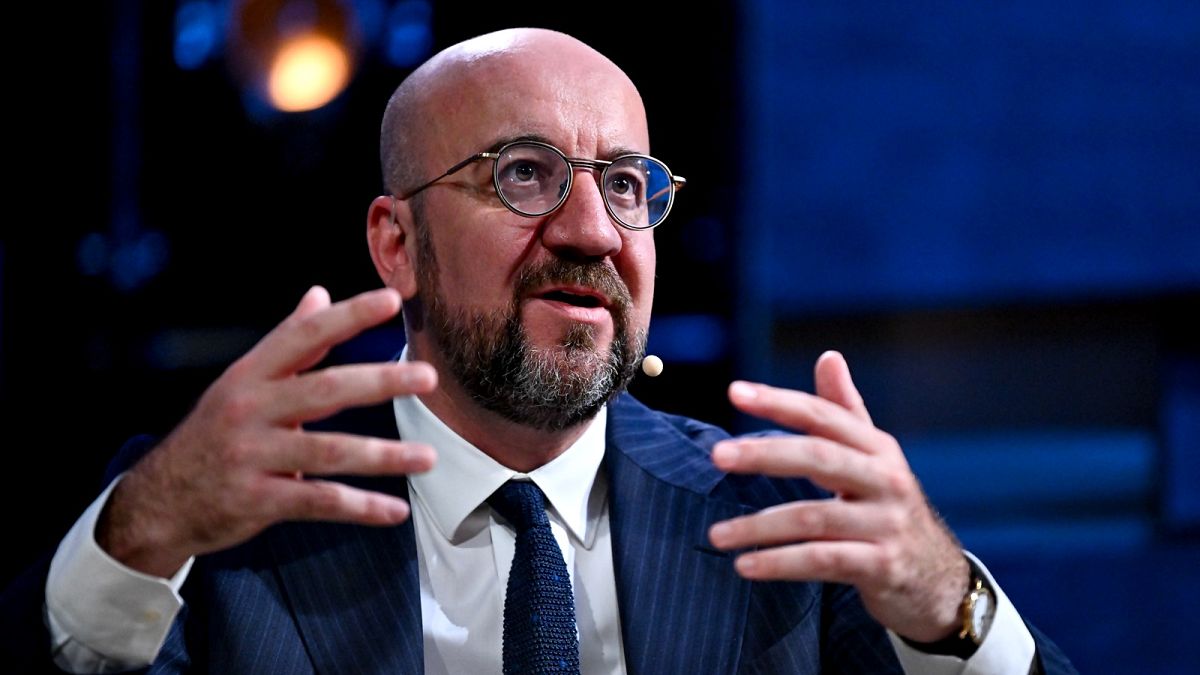North Dakota
Lame-duck North Dakota lawmakers roamed to faraway conferences on the taxpayers’ dime

BISMARCK — Over a long career in public budget writing, former North Dakota Rep. Jeff Delzer earned a reputation as a champion of conservative spending.
The Underwood Republican’s travel log tells a different story.
Delzer took more than 30 taxpayer-funded trips to out-of-state conferences and meetings in the past decade, collecting nearly $26,000 in daily payments for himself along the way.
One of Delzer’s costliest excursions came after voters decided they didn’t want him in office any longer.
About two months after
losing his bid for reelection
in last year’s primary, Delzer attended an annually held legislative summit in Denver. The state funded the trip to the tune of $3,700.
Delzer wasn’t the only lame duck to wander from the pond. Since 2014, the North Dakota Legislature has spent more than $45,000 to send a dozen retiring and defeated lawmakers to out-of-state conferences, according to documents obtained by Forum News Service through a public records request.
Some of the departing lawmakers served on interstate policy boards and were expected to show up to faraway meetings, but others went to conferences that could have been attended by any of their colleagues who planned to remain in the Legislature.
Rep. Robin Weisz, a Hurdsfield Republican who briefly oversaw legislative conference attendance this year, said lawmakers who announce their retirement or lose an election “shouldn’t be sent anywhere after that point.”
“To me, it should be people going that are gonna get usefulness out of the meeting,” Weisz said.
Delzer said lawmakers who are leaving office still can gain valuable information from conferences to share with those who will stay in the Legislature.
Forum News Service file photo
“You don’t want to quit learning, and just because you’re not there does not mean you’re not going to have the opportunity to visit with people and bring back and share what you learned at these conferences,” Delzer said.
Most of the lame-duck trips were approved by former Sen. Ray Holmberg, a Grand Forks Republican who resigned in June after a Forum investigation found he
exchanged text messages
with a jailed man accused of child pornography crimes.
Holmberg, who
attended more out-of-state trips
than any of his peers since 2013, also signed off on his own travel during the parts of eight years he served as chairman of Legislative Management, an interim panel of top lawmakers.
The senator’s ability to authorize his own state-funded trips was “a basic conflict of interest,” said Mark Jendrysik, a political science professor at the University of North Dakota.
“That is completely unethical. I can’t believe they let him do that,” Jendrysik said. “You can’t possibly be unbiased in your own case.”
When asked whether it was a conflict of interest to approve his own travel, Holmberg said the chairman of Legislative Management is given that authority by state law.
“How else would you do it? That’s what the law is,” Holmberg said.
Since 2013, the state has spent an average of $450,000 each two-year budget cycle to cover legislators’ conference-related expenses, including airfare, lodging, meals and daily pay, known as per diem.
The goal of sending lawmakers to conferences is “primarily educational,” said Legislative Council Director John Bjornson.
Members of the House of Representatives and Senate can learn from policy experts and compare notes with their counterparts from other states, Bjornson said. When the Legislature heads into session, lawmakers can use what they picked up at conferences.
Jendrysik said sending soon-to-be sidelined lawmakers on such trips strikes him as unethical since “you can’t apply the things you learn on the taxpayers’ dime in the Legislature.”
Nearly all of the lame-duck lawmakers who attended out-of-state conferences during their waning terms held positions of influence within the Legislature or their party.
Delzer, the longtime chairman of the House Appropriations Committee, made two state-funded trips after losing to two Republican candidates in June. Besides the National Conference of State Legislatures (NCSL) summit in Denver, he attended a San Antonio meeting of the Energy Council, a board on which he served.

John Hageman / Forum News Service
Former House Speaker Kim Koppelman, R-West Fargo, attended a July meeting of Midwest lawmakers hosted by the Council of State Governments (CSG) in Wichita, Kansas. Several months earlier, he had
dropped out of his race for reelection
after losing his local party’s endorsement.
Less than two weeks after proclaiming that he
would not seek another term
in July 2019, former Sen. Dwight Cook attended an NCSL summit in Nashville, Tennessee. The Mandan Republican who chaired the Senate Finance and Taxation Committee for a decade also attended meetings of two separate
interstate tax policy groups
to which he belonged.
Caroyln Nelson, a former assistant minority leader in the Senate, attended an NCSL conference near San Diego in December 2017 less than a month after
announcing her intention to retire
the following year. The Fargo Democrat also went to meetings in northern Minnesota and Chicago for boards on which she served.
Former House budget writer Mark Dosch, R-Bismarck, attended a CSG meeting in Milwaukee about six months after
it became public
he would not seek reelection in 2016.
Former House Speaker and Majority Leader Wesley Belter, R-Fargo, attended conferences in Chicago, Denver and Burlington, Vermont, after
announcing he would not seek another term
in December 2015.
Tony Grindberg, a longtime Senate budget writer from Fargo, went to a CSG conference in Anchorage, Alaska, three months before the end of his final term in 2014. The Republican who now serves on the Cass County Commission
announced he would not seek another legislative term
in January of that year.
The ex-lawmakers offered several justifications for the trips they took before leaving the Legislature.
Cook and Nelson said they were already registered for the conferences before announcing they would retire. Nelson added that she shared the information she gained from the meetings with other members of her small Democratic caucus.
Belter said elected representatives must continue serving their district and the state until the end of their term. He noted that current lawmakers occasionally ask him about certain issues, so his legislative knowledge is still put to good use.
“I think that the biggest point I would like to make is that I see nothing wrong with a legislator going to a conference after they’ve decided (to retire) because there is no replacement for them at that point in time,” Belter said.
Delzer said the trips he took were justified since he used the knowledge he gained “validly and wisely.”
Koppelman, Dosch and Grindberg did not respond to Forum News Service’s requests for comment on this story.
Several other lame-duck lawmakers attended out-of-state meetings of groups to which they belonged, including former Sen. Jessica Bell and former Reps. Scot Kelsh, Lois Delmore and Jim Schmidt.
Bell, Kelsh and Delmore said they were expected to go to the meetings as members of their respective panels. Schmidt did not respond to a request for comment.
Former Sen. Joe Miller, R-Park River, attended a Denver agriculture conference as a lame duck in 2016, but he did not collect a per diem or any travel reimbursements. The state paid only the $745 he needed to register for the conference.
Miller told Forum News Service he received enough regular compensation for being a lawmaker, and he “just thought it was unnecessary to be further paid” for going to a meeting.
Holmberg approved most of the lame-duck trips as the chairman of Legislative Management from 2013-2018 and again from 2021 until April 2022, when he resigned from the position.
He told Forum News Service he took cues from the majority and minority leaders, who recommended members of their caucuses for different conferences. Holmberg said he thought sending lame ducks to conferences wasn’t a good use of public funds, but signed off on it if legislative leaders insisted.

Jeremy Turley / Forum News Service
Former Senate Majority Leader Rich Wardner, R-Dickinson, said he rejected plenty of travel requests by soon-departing lawmakers, but he made exceptions for important members of interstate committees.
Former House Majority Leader Chet Pollert, R-Carrington, said it was valuable to send experienced lawmakers — even sometimes lame ducks — to represent North Dakota in various policy groups to make sure other states didn’t have undue influence.
Weisz chaired Legislative Management for less than two weeks this month before House Majority Leader Mike Lefor, R-Dickinson, took over the role.
But even in his abbreviated time at the helm, Weisz said he began receiving travel requests from lawmakers for conferences as far out as next year. Some of the requests came from colleagues he believes won’t seek reelection. Now, Lefor will have to deal with those, he said.
“I was like, ‘OK, do we really want to send someone who’s not running or frankly is checked out in a way already? To me, that is an issue,” Weisz said. “You do want to send people that are going to bring back something useful and not (to) get a paid vacation.”
Weisz, who has attended only a couple of out-of-state conferences during his nearly 30-year tenure, said the approval of conference attendance over time has become more first-come-first-serve and less a strategic effort by leaders to prepare and improve important lawmakers.
Lefor said he will evaluate travel requests on a case-by-case basis to determine whether investing in a lawmaker’s training benefits the state. Lawmakers can spend up to $965,000 over the next two years on conference attendance.
Jet-setting at state’s expense
The locations of conferences attended by Holmberg since 2013 read like a glossy travel magazine’s table of contents: Norway, Puerto Rico, Alaska, Los Angeles, Miami and Vail, Colorado.
As Weisz put it, Holmberg “rarely missed a meeting.”
In all, Holmberg made about 65 publicly funded trips over the last decade at a total cost of nearly $126,000 —
by far the most of any lawmaker.
He was paid $47,000 in per diem for attending the conferences.
He approved most of the trips himself as chairman of Legislative Management.

Jeremy Turley / Forum News Service
Holmberg told Forum News Service his role as a leader in between legislative sessions necessitated his frequent appearances at conferences and meetings across the continent.
Despite holding the ultimate authority to approve his own travel, Holmberg said he consulted Wardner before signing up for the conferences. Wardner said he never rejected Holmberg’s requests “because they were all reasonable.”
Weisz said it makes sense that Holmberg attended more meetings than the average legislator, but “he took advantage of it.”
Jendrysik, who teaches a graduate-level class on ethics in the public sector, said Holmberg shouldn’t have been able to exert influence on his own travel requests. The professor noted that he wasn’t permitted to approve his own travel when he chaired his department due to the conflict of interest it would have presented.
In the future, there should be a committee or some other mechanism to review travel requests by the chairman of Legislative Management, Wardner said.
Since Lefor is both the House majority leader and the chairman of Legislative Management, he wouldn’t have to consult anyone at all before approving his own trips.
Lefor agreed that there probably should be some check on the chairman’s travel, but he isn’t yet sure what form that would take. On a personal level, Lefor said abusing the power of the position won’t be an issue for him.
“I don’t think you’ll find me taking a lot of trips,” Lefor said. “I think I would hold myself to a higher standard.”

North Dakota
Obituary for Leo Wolf at Feist Funeral Home

North Dakota
Smoke from Canadian wildfires affects air quality in North Dakota and neighboring states

DICKINSON — Wildfires in Canada, particularly in Ontario and Quebec, have intensified, leading to significant smoke drifting into North Dakota, South Dakota, Montana and parts of Wisconsin, impacting air quality. Drought, strong winds, and warmer conditions have exacerbated these fires, creating a complex challenge for environmental and health agencies.
The most recent data from the Canadian Interagency Forest Fire Center Inc. counts a total of 130 active fires. 38 labeled “Out of Control,” and the majority a total of 81 labeled “Under Control.”
Meteorologist Michael Hollan from the Bismarck National Weather Service detailed how smoke from these northern fires is transported into the region by the jet stream, affecting both higher altitudes and ground levels depending on wind patterns.
Predicting the exact movement and density of smoke is challenging due to the dynamic nature of the fires and varying atmospheric conditions. “Forecasting the persistence of smoke is complex more than a day or two in advance,” Hollan noted, underscoring the unpredictable behavior of wildfires and their impact on air quality.
Local residents are advised to stay informed through the
North Dakota Department of Health and the Fire and Smoke Map
provided by the U.S. Environmental Protection Agency. These resources offer updates on air quality, which is crucial for individuals with respiratory conditions or heart diseases, as PM2.5—fine particulate matter from wildfire smoke—can deeply penetrate lung tissue and exacerbate health issues.
Given the observed increase in the severity and frequency of wildfires due to climate change, such smoky conditions could become a more common occurrence. “There has been an overall increasing trend in the wildfire season, both the severity of it and the duration of it over the past few years,” stated Hollan.
He also suggested that this could be something people in the region might need to become more accustomed to, with potentially more smoky days than in the past.
For daily updates on smoke and air quality, North Dakotans should consult the North Dakota Department of Health’s website and the EPA’s Fire and Smoke Map, ensuring they have the latest information to make informed decisions about their health and safety during these recurring environmental events.
Manny is a journalist with a diverse background in communications. Born and raised in El Paso, Texas, he earned his degree in the DFW area before venturing to New York City. There he worked as an ethnic media reporter, covering local issues and immigration news. A long history of dedication to sensitive reporting, Manny’s journalistic journey has led him to Dickinson where he takes on the role of a hard news reporter.
North Dakota
7 Most Idyllic Small Towns in North Dakota
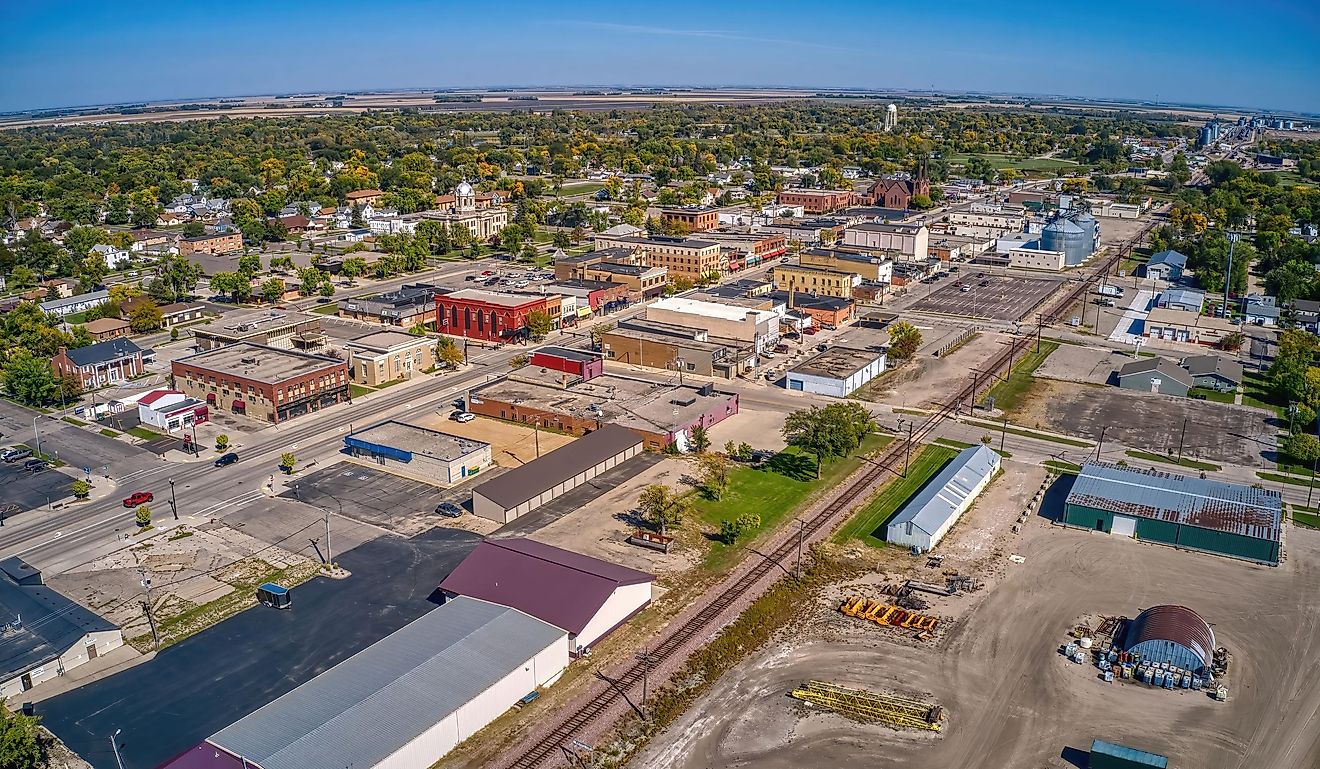
When people picture an idyllic life, they often imagine peacefulness, pleasantness, and simplicity. This can seem like an impossible dream until you cross the border into North Dakota.
This underrated state is known as the Peace Garden State for a very specific reason. It is the place people go to escape the drama of everyday life and simply gaze out over the prairies while taking in the incredible atmosphere.
North Dakota is wild in the best way. You will see bison, wild horses, and prairie dogs. There is more than enough time to explore badlands and endless trails. Drama has no place here, and there is magic, excellent weather, and intriguing history.
If you want to experience a true haven, even if you only visit the Legendary State once in your life, start with the most idyllic small towns.
Devils Lake
Devils Lake may not be the most idyllic name, but this small town of 7,000 is one of the best places in the U.S. to become one with nature.
Here, you can cast a line into the water of Devils Lake and forget about the rest of the world. All you need to do is keep an eye out for northern pike, perch, walleyes, and white bass.
If you travel here during winter, you can ice fish to your heart’s content. You can also take a day or two to swim and relax in the sun or explore some of the fantastic hiking trails in the nearby Grahams Island State Park. It is the perfect place for camping or strolling along the lakeshore.
Cap off your visit by teeing off on a local golf course and enjoying the unparalleled starry night sky that blankets the Devils Lake landscape.
New Town
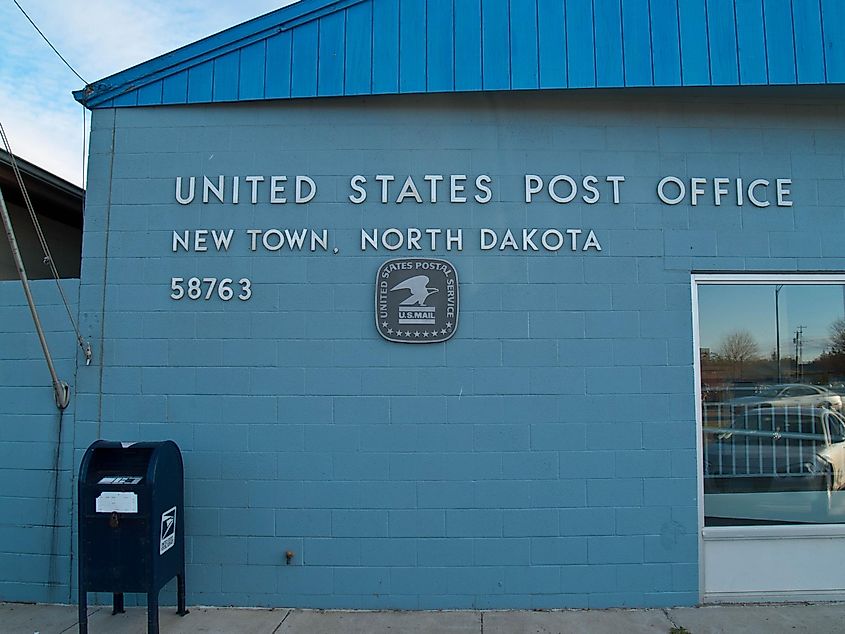
You will see the stars in New Town, too, as well as calm lakes and rocky shores. New Town embodies the meaning of idyllic living with its oil boom prosperity and scenic location.
New Town still retains its quintessential small-town America look and feel. You will find it on State Highway 23, where Lake Sakakawea crosses the Four Bears Bridge. It is also right at the edge of the Fort Berthold Indian Reservation.
There is so much beauty to admire in New Town while fishing or boating. Just west of the town, you will find the Crow Flies High State Recreation Area, with its magnificent overlook over the water of the lake.
While you take in this unforgettable scene, you might even catch glimpses of Sanish, a town covered entirely by Lake Sakakawea.
Dickinson
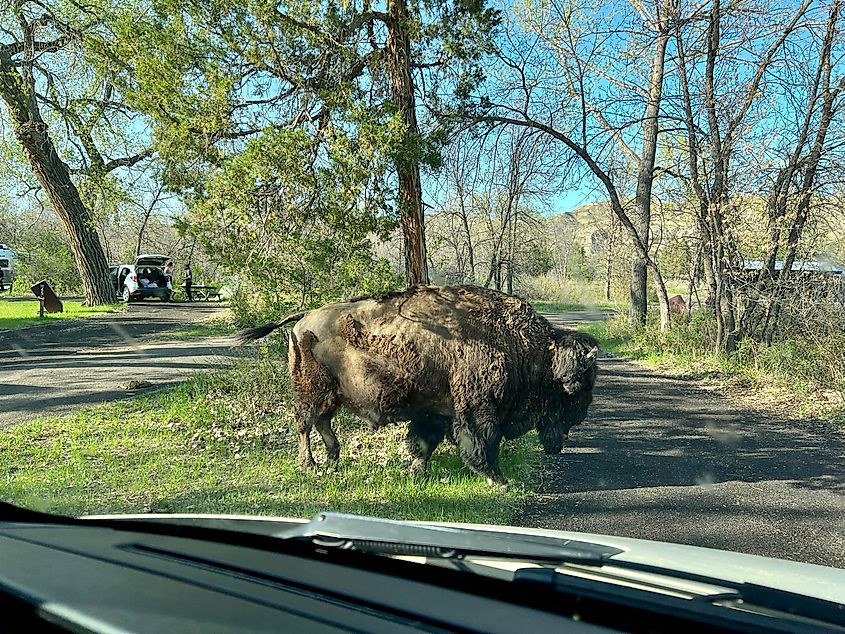
If you are into unforgettable nature scenes and just relaxing in the outdoors, Dickinson should be one of the stops on your North Dakota visit.
Dickinson boasts more residents, with a population of just under 25,000, but the small-town feel is still there. It is also the gateway to the simply wonderful Theodore Roosevelt National Park.
Here, you can explore and contemplate the exact spot where Roosevelt once paced up and down, looking for and finding the inspiration he needed.
You will see the remainder of the enigmatic cultures that once inhabited the badlands, including a bison processing camp and a meticulously placed ring of rocks. These cultures, which include the Blackfeet, Cree, Sioux, and Chippewa, each have their own connection with the badlands.
Speaking of badlands, Dickinson is also home to the Badlands Dinosaur Museum, which features constantly evolving exhibits.
When you have soaked in as much local history and archaeology as possible, head over to the Old Red Old Ten Scenic Byway that runs between Mandan and Dickinson. This road trip will soothe your soul with the blue skies seeming closer than ever and the wildlife gazing at you curiously as you drive slowly by.
Valley City
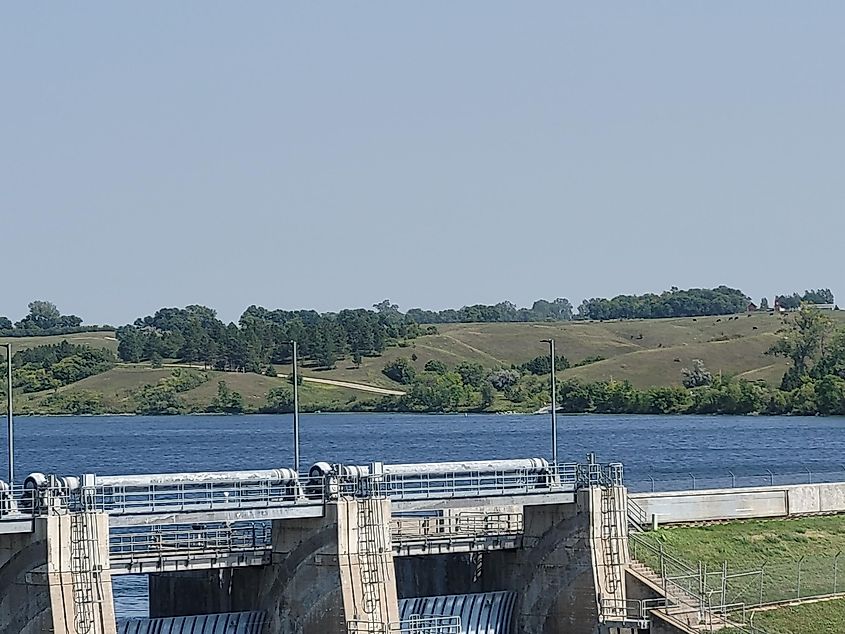
Idyllic looks different to different people. While curious wildlife and clear skies are what some yearn for, some just want to enjoy the open road and whatever comes next.
If Valley City happens to be at the end of that open road, you may just find what you are looking for in this legendary town.
Here, you can go on a tour of eight historic bridges and visit the Medicine Wheel Park. The park features a replica of the Native American solar calendar, reflecting Earth’s spinning journey around the sun.
Continue your journey through Valley City by stopping at the Rosebud Visitor Center, which also happens to be the gateway to the Sheyenne River Valley. One of the most incredible exhibits at the visitor center includes an 1881 railcar with original furnishings. The visitor center also brings Valley City’s railroad history to life with other indoor and outdoor displays.
There is also North Dakota’s only planetarium at Valley City State University, where you will experience the night sky in an entirely new way.
Bottineau
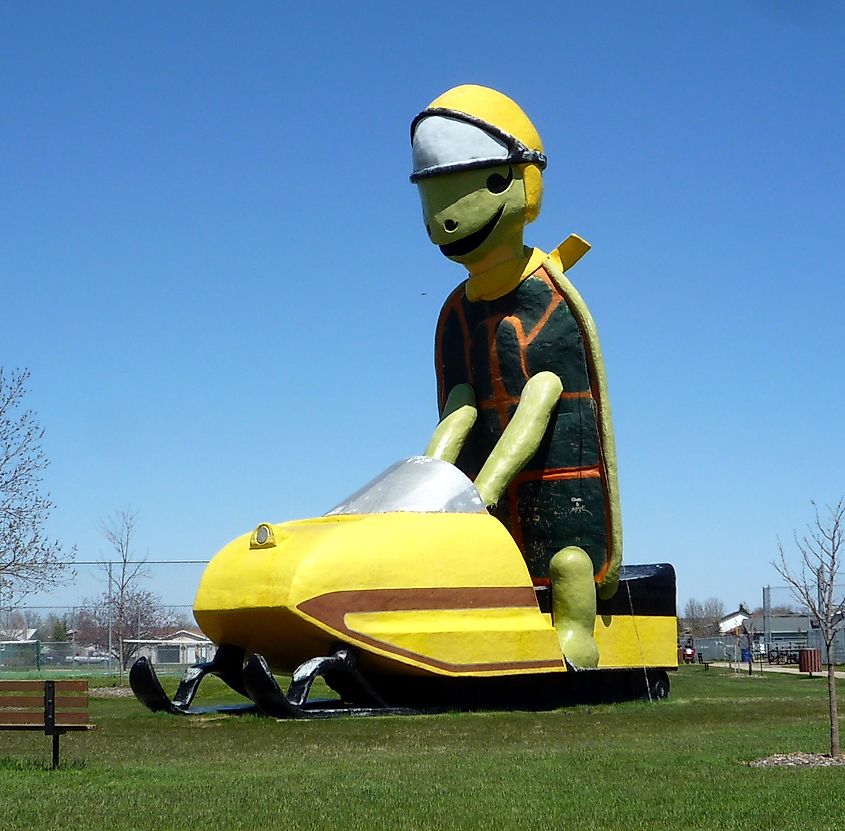
Bottineau may not be all about the stars and planets, but you will find the endearing Tommy Turtle here. While this may sound like a strange attraction for people looking for idyllic surroundings, keep in mind that it is one of the most photographed statues in town, and maybe in North Dakota.
Tommy stands at the entryway to the Turtle Mountains, so even if giant turtle statues are not your thing, these mountains certainly will be. Located just six miles northwest of the town, you will pass farmsteads and gorgeous landscapes on your way. And, if tranquility is what you are after, you will find plenty of that inside the Turtle Mountain State Forest.
If you are up for a little skiing, the Bottineau Winter Park will be right up your alley. Sitting in the Turtle Mountains, this region earned its informal title of ‘most beautiful area in North Dakota.’
Wahpeton
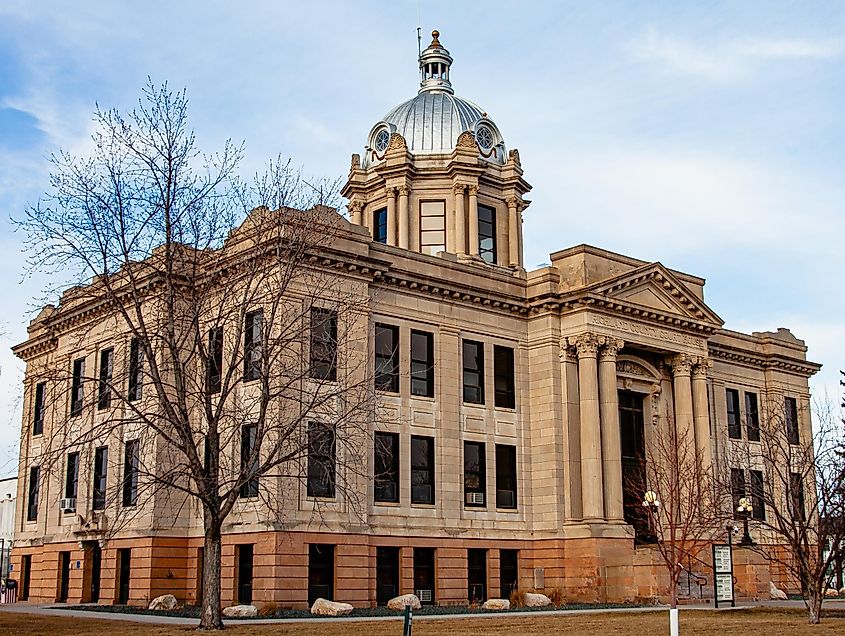
More blissful landscapes await in the beautiful town of Wahpeton. Here, you can visit the Chahinkapa Zoo, which has a massive variety of animal species along the Red River. The infamous Prairie Rose Carousel is also a must-see with its twenty handcrafted wooden horses and two chariots.
You can spend several hours away fishing at the Kidder Recreation Area or test your swing at the Bois de Sioux Golf Course. There is the Richland Couty Historical Museum to explore and the Red Door Art Gallery, both of which form part of the so-called ‘art corridor.’
When you have had your fill of art and history, camp out at the shores of the Red River for a relaxing afternoon of boating and some more fishing.
Medora
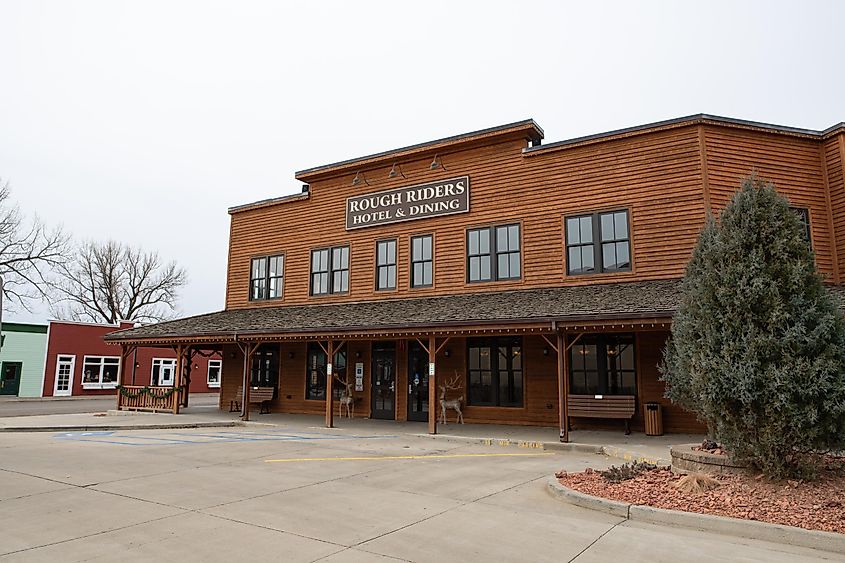
Medora is the last idyllic small town on this list and also the smallest. With 142 residents as of 2024, you do not get much more peaceful than this tiny town.
Medora is small enough to explore with your feet. You can walk just about anywhere, including to the Old Town Hall Theater, where the Teddy Roosevelt statue stands. Roosevelt’s presence is felt everywhere, especially at the Rough Riders Hotel, where you can read more about the connection between Medora and America’s 26th president.
You will not want to stay inside, however, regardless of the weather. There are too many canyons, badland landscapes, and other unforgettable attractions to see. And, if you are looking to immerse yourself in Western culture while on a relaxing vacation, this is where you will find it.
These small towns are the proverbial tip of the iceberg when it comes to living the dream, whether permanently or while on holiday. North Dakota abounds with wildlife, national parks, nightly entertainment, and American history. It appeals no matter what type of idyllic dream you are looking for. So, next time you feel burned out and just need a break, head to the Great American West for a memorable experience.
-

 Politics1 week ago
Politics1 week agoHouse Dems seeking re-election seemingly reverse course, call on Biden to 'bring order to the southern border'
-

 World1 week ago
World1 week agoStand-in Jose Raul Mulino wins Panama presidential race
-

 News1 week ago
News1 week agoCompass Direct LLC’s 2024 Registration in North Carolina
-
News1 week ago
UCLA to resume in-person classes after Gaza protest crackdown
-

 World1 week ago
World1 week agoTech compliance reports, Newsletter
-

 News1 week ago
News1 week agoColumbia University cancels its main commencement ceremony after weeks of turmoil
-

 News1 week ago
News1 week agoMan, 75, confesses to killing wife in hospital because he couldn’t afford her care, court documents say
-

 World1 week ago
World1 week agoPentagon chief confirms US pause on weapons shipment to Israel














